” Push boundaries, go outside of your comfort zone. That’s where true creativity lives!”
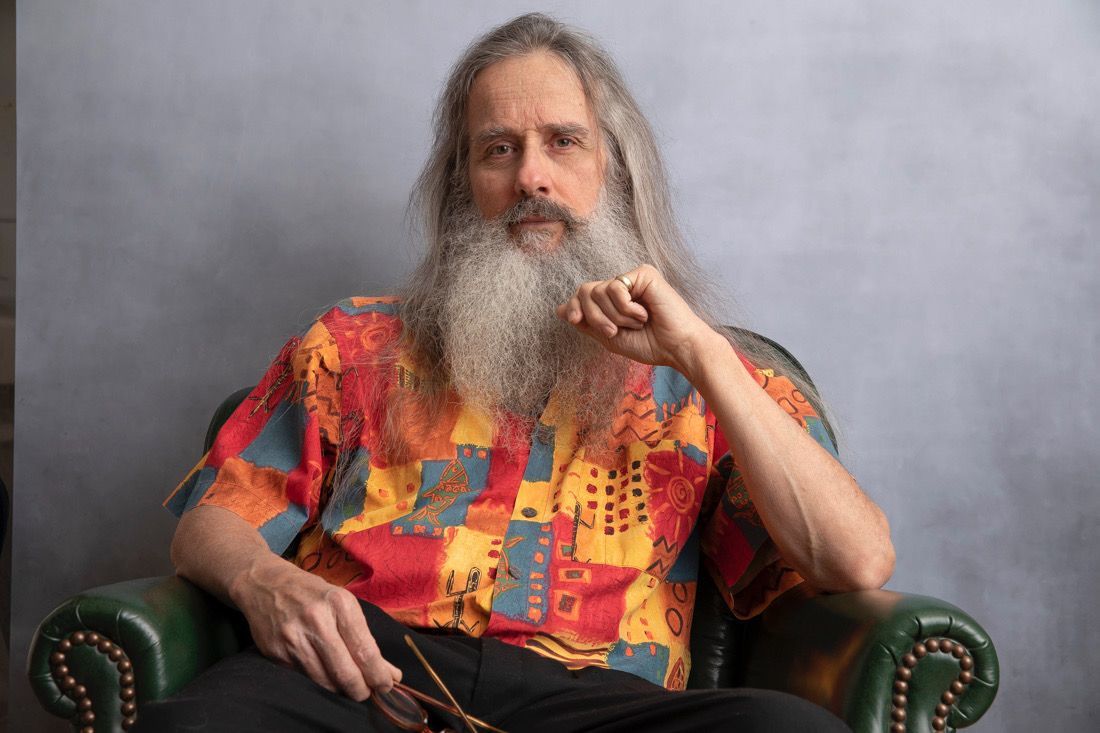
What’s your background? Can you tell us who are you and what and why do you do what you do? Your educational background and any experiences that may have contributed to your evolution as an artist. Your vision, goals, and what success means to you.
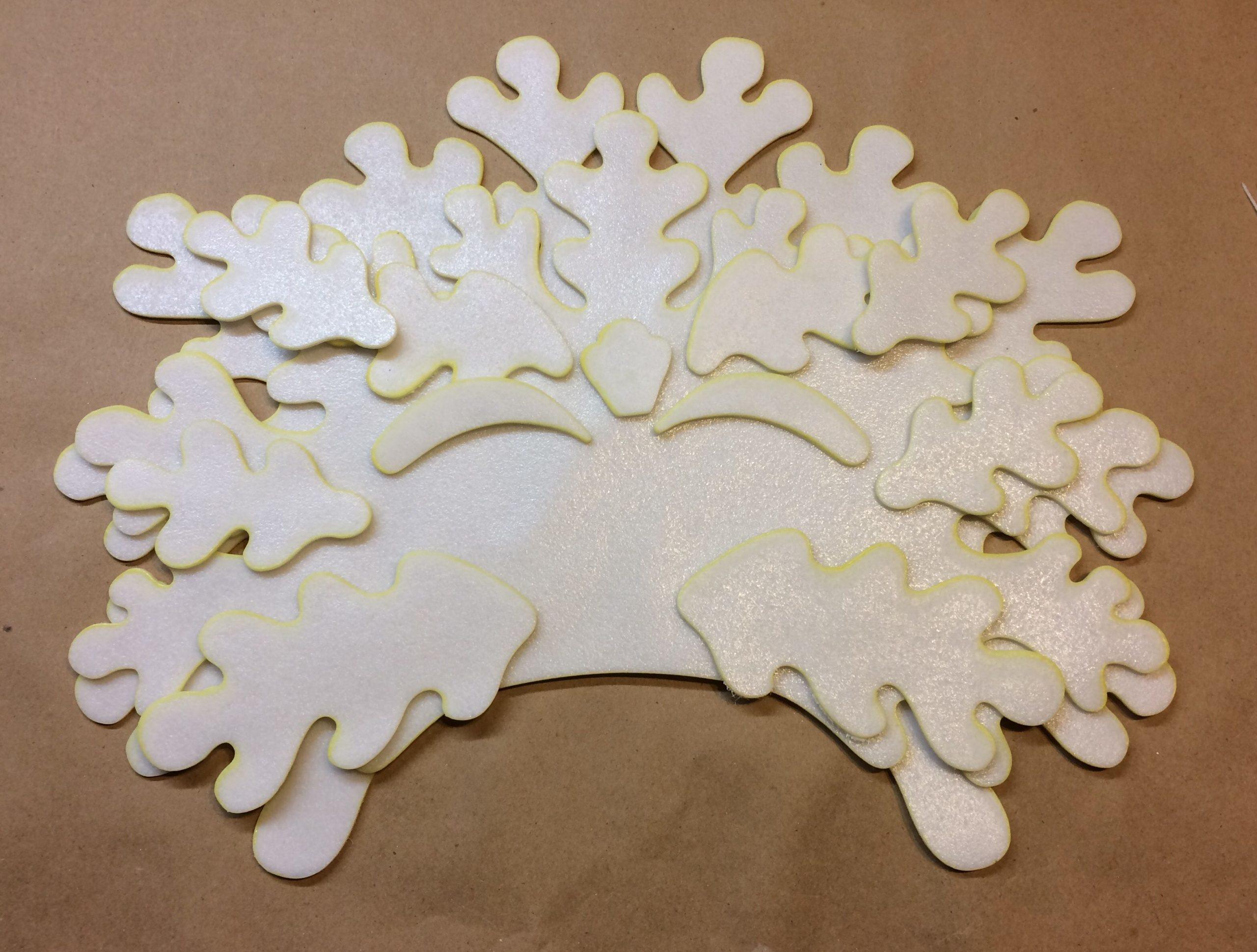
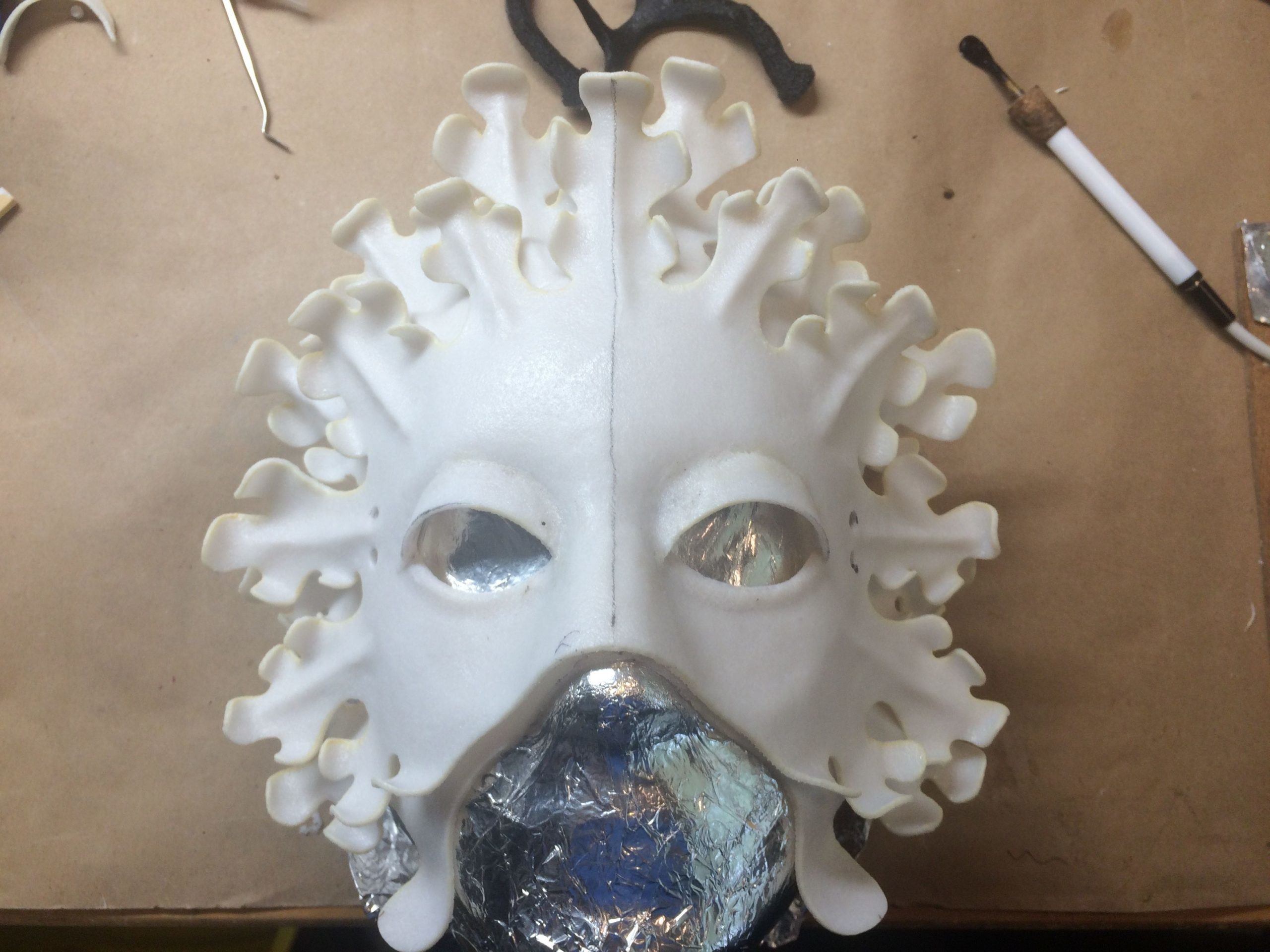
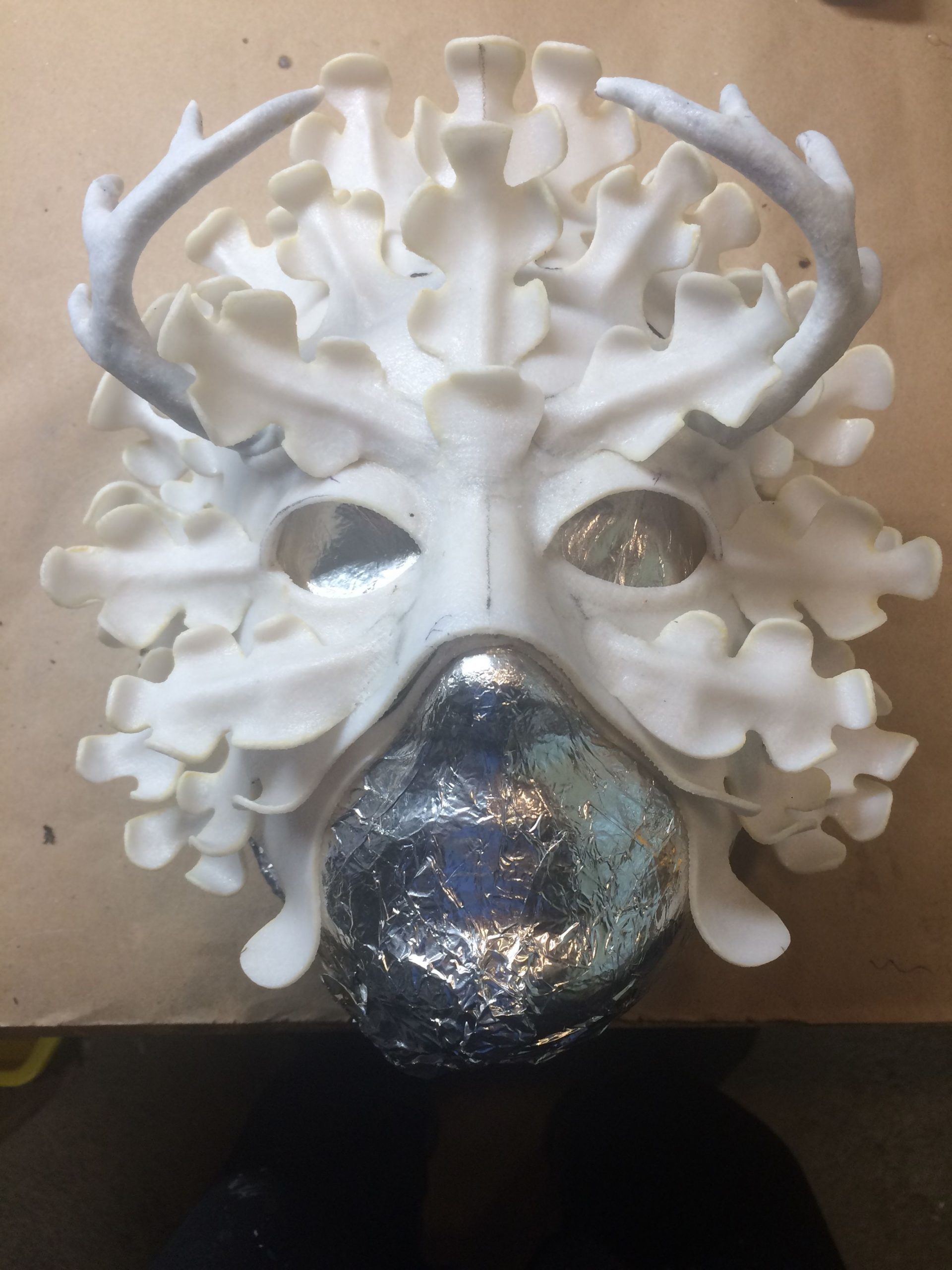
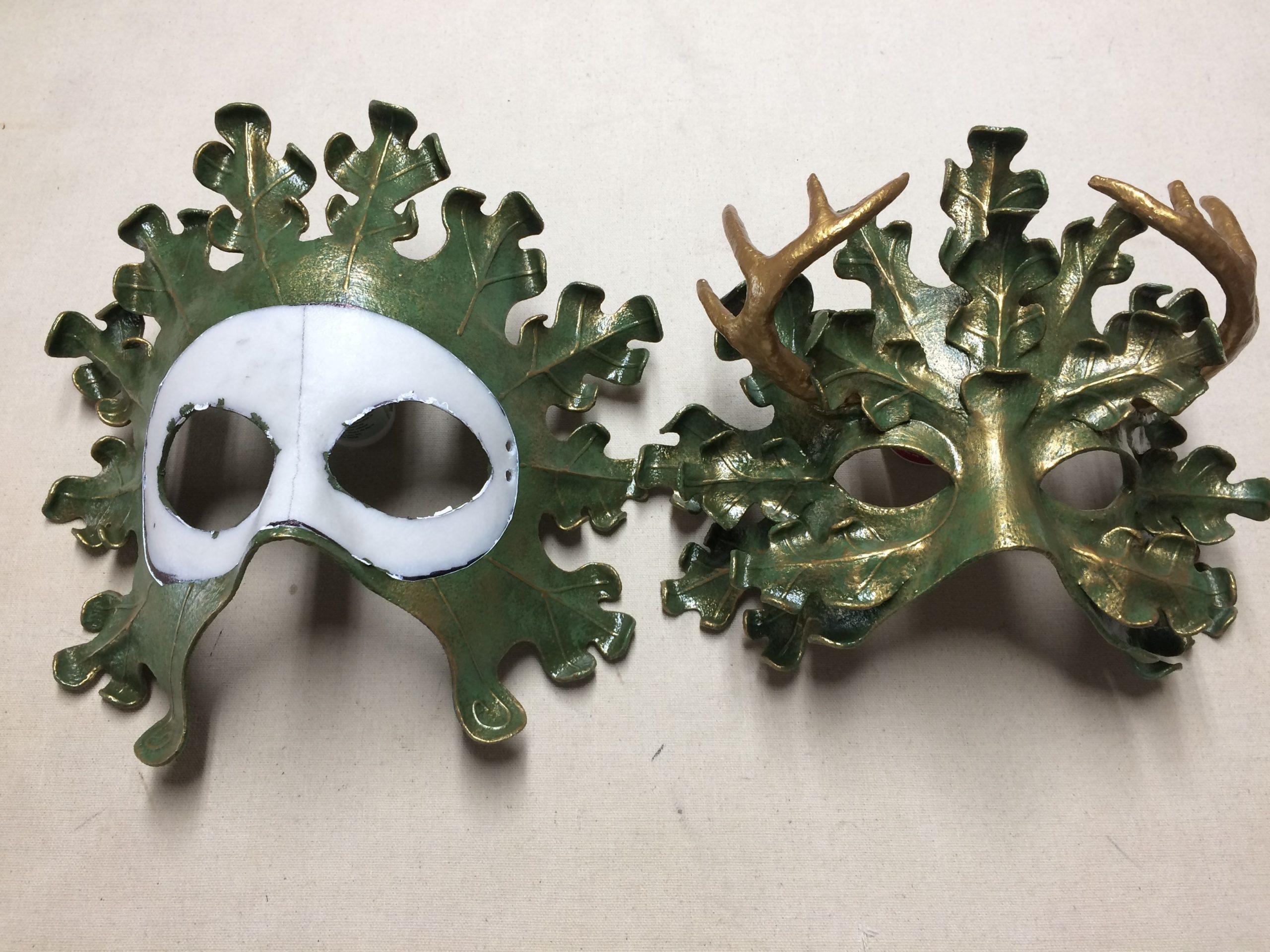
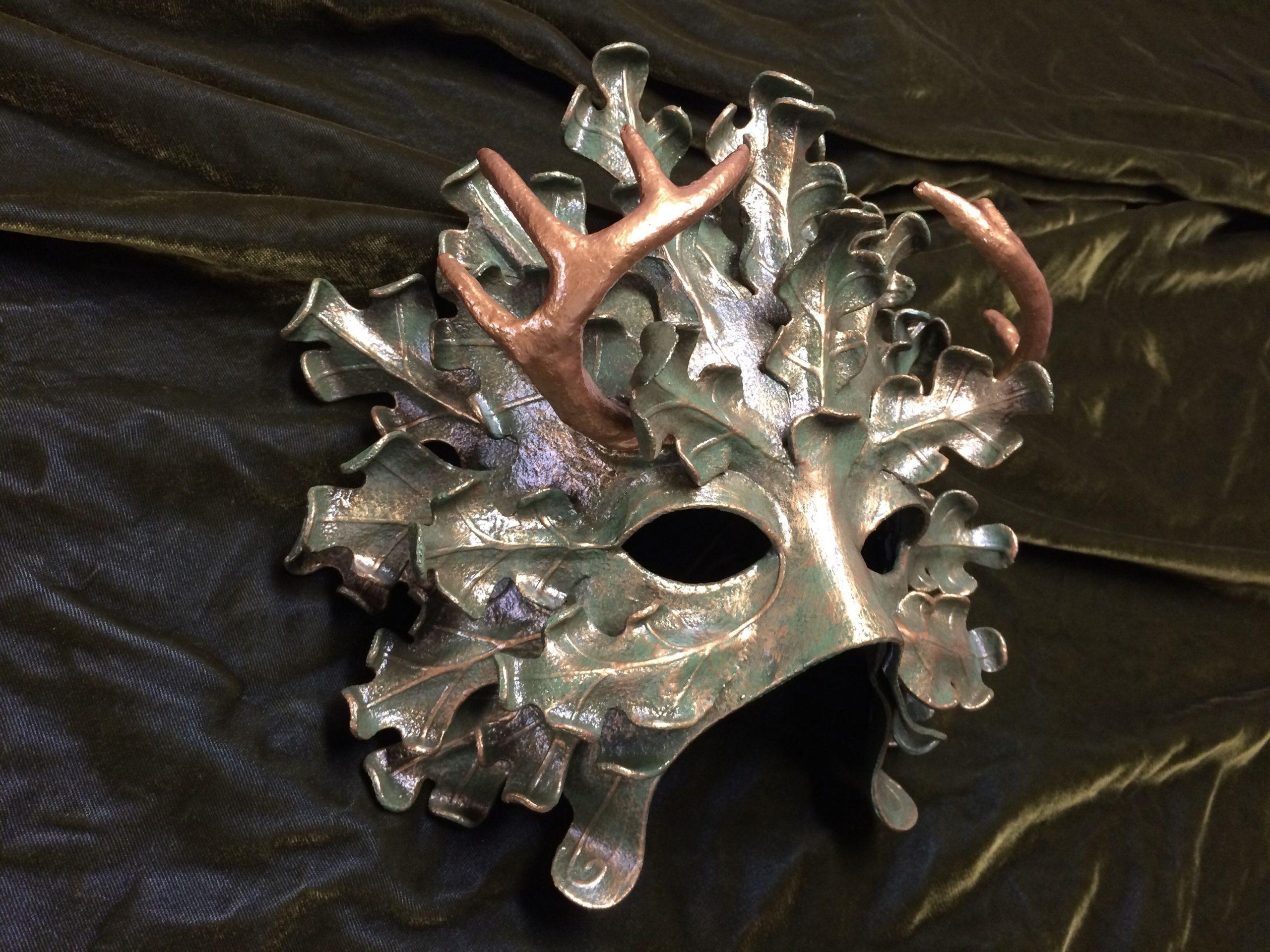
I am Robert Lamarche (pronounced “Robear”), a French-Canadian-born artist living and working in California. Basically I am a sculptor and illustrator who works in many different media, whether it is clay, metal, paper, computer graphics, textiles or plastics. Other than spending about a year as apprentice with Spanish-born muralist Jordi Bonet in the 70s (I was basically sweeping the floors in the workshop), I have no formal education in art — I am mostly self-taught — and thus I have developed my own techniques and approaches. I am sure this has led me to unnecessarily re-invent the wheel and maybe limited me at times, but I feel it also prevented me from being bound by tradition and convention. It also meant I put myself out there as a working artist at an early age. I was showing my ceramic sculptures as a solo gallery artist in Montreal at age 17. I have always been self-employed — never worked for the “man”.
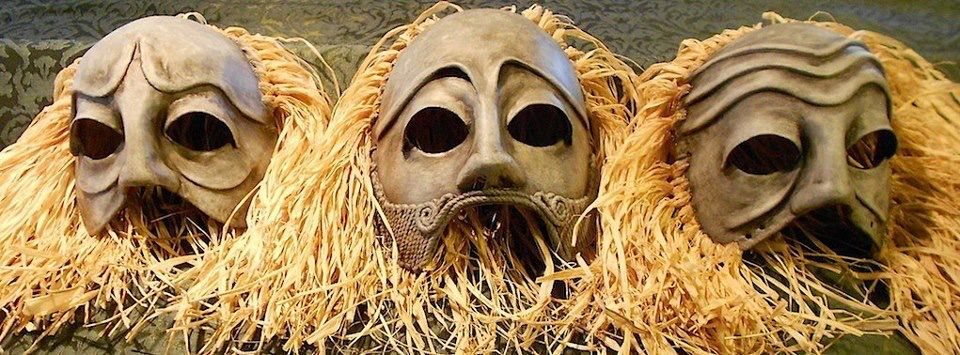
Ancient art, Greek, Pre-Columbian American, Egyptian, Japanese, count as my strongest sources of inspiration, along with the mythologies that inspired those treasures. I believe that, no matter the medium, art should be a mixture of talent, vision and skill. The first two are God-given and hopefully nurtured, whereas skill has to be developed.
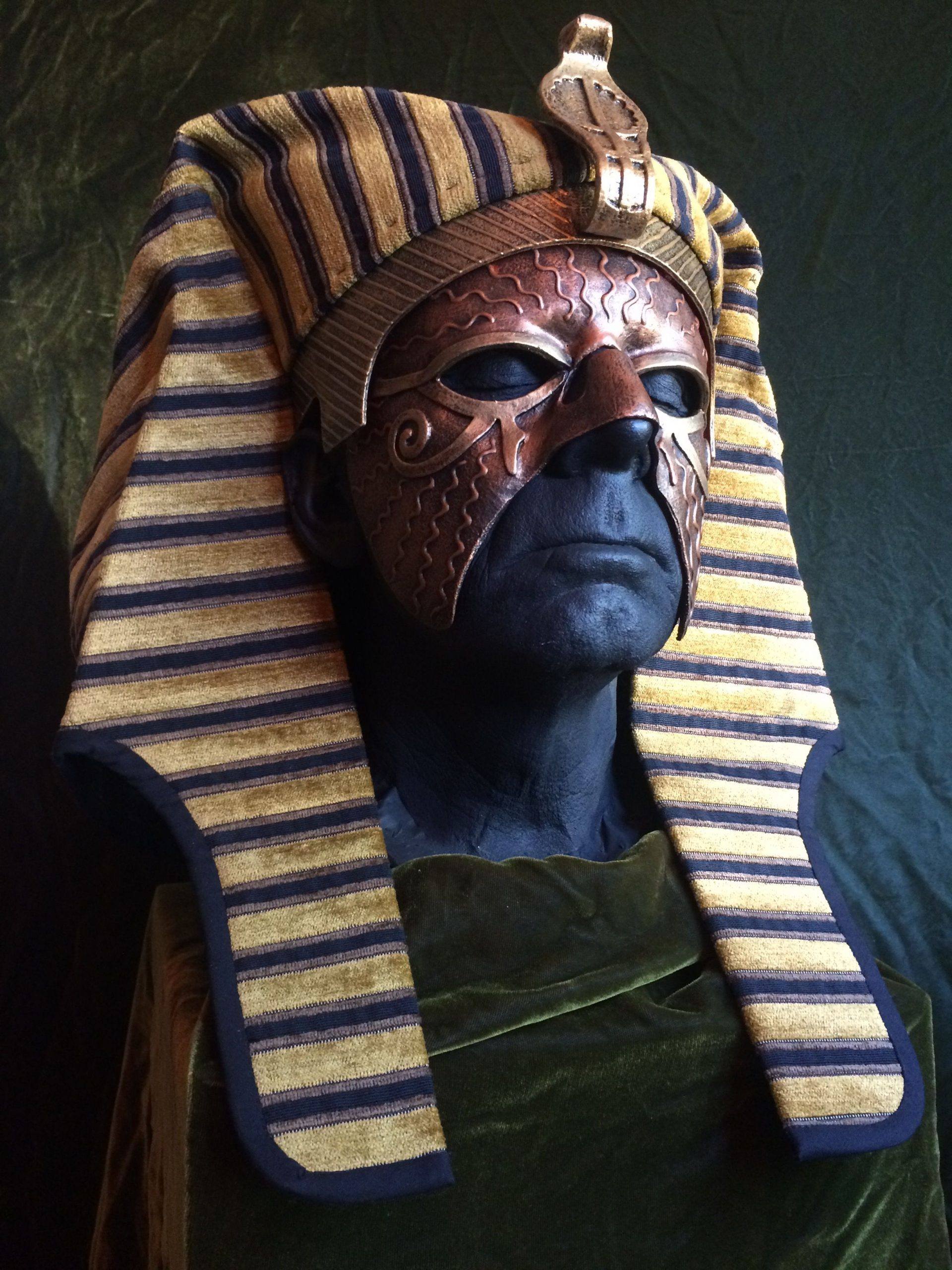
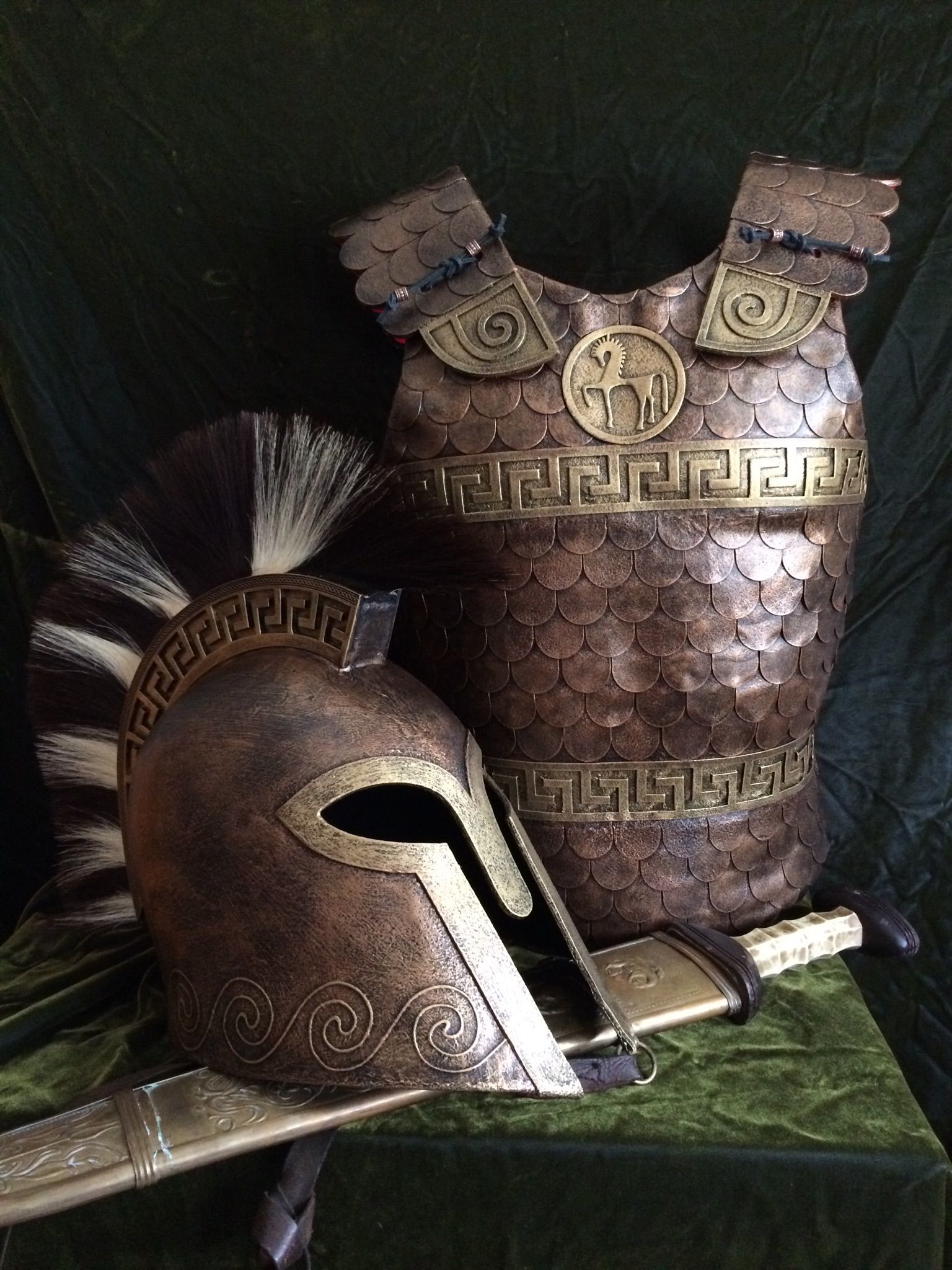
Now nearing 65 years of age, I no longer work with the heavy materials such as clay, and mostly concentrate on costume design and mask-making. Looking back, living exclusively from my art over my entire career is a good measure of success. I realize that few working artists achieve that. I feel very blessed.
I see that you use Wonderflex for quite a lot of your masks?
Yes I do! Actually, Wonderflex is the basis for all of my masks. I used to make masks out of the traditional stuff, like paper maché or plaster, but it is only after I discovered and started using Wonderflex that I decided to make masks to sell.
What draws you to Wonderflex as an art medium?
It is lightweight, not messy, doesn’t break, crack or shatter, and unless you leave your mask on the dashboard of your car on a hot California day, it is virtually indestructible. I also love that there is no drying time during the sculpting process; you can literally work nonstop on a project until it is done, or leave it unfinished for days or weeks and come back to it. It is perhaps the only material I know you can start making a mask with in the morning, and wear it the same evening at the masquerade ball. Cool Stuff!
What are some of your most essential tools in working with Wonderflex?
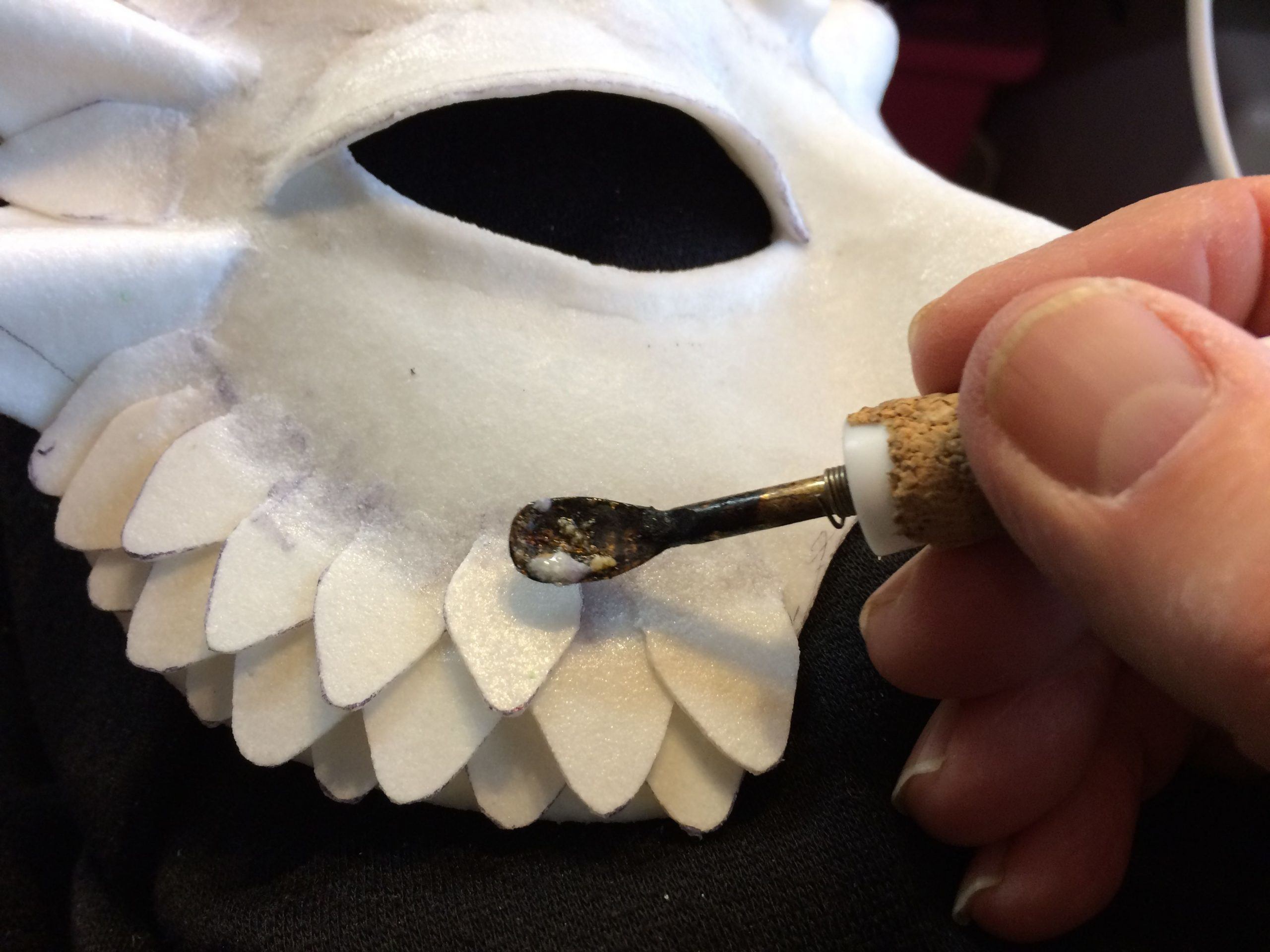
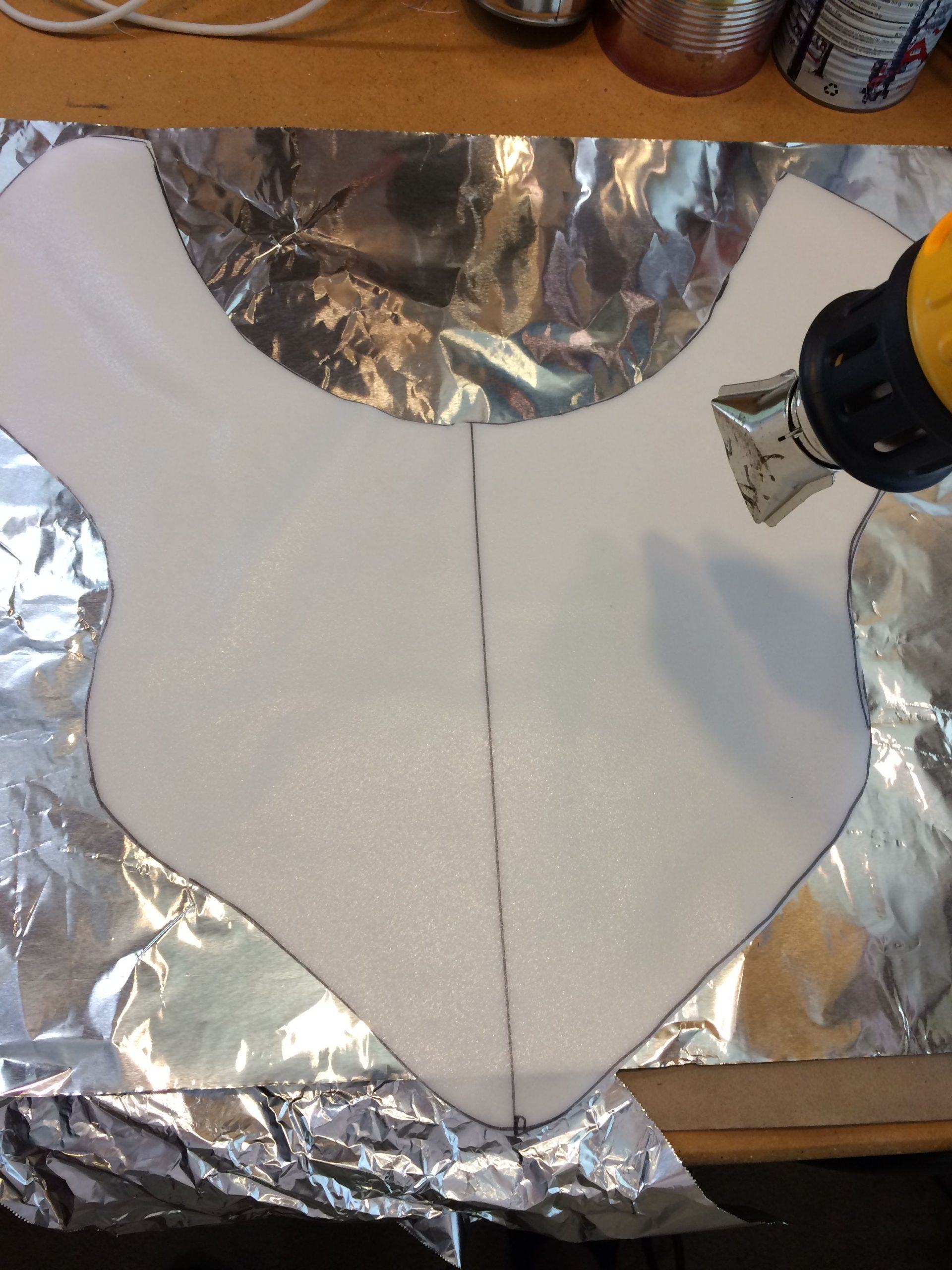
Besides a good professional-grade heat gun, my Foredom electric wax carver hot knife is my best friend. For detail work and fusing small pieces it cannot be surpassed. Jewelers use such wax carvers to create their wax models prior to casting in metal. Other than that, heavy-duty leather scissors, a small wooden roller, clay sculpting tools, bamboo skewers, lengths of coat hanger wire, a hot glue gun, a chef’s butane torch and a most precious old cardboard tube from a roll of paper towels (it’s *just* the right diameter) complete my arsenal. I have also made a number of press molds out of polymer clay to shape the thermoplastic over. My generic “one-size-fits-most” face-forms I sculpted out of ultracal gypsum cement. Every mask I make starts on those face-forms. More recently, I have been experimenting with using a laser machine to cut parts out of Wonderflex. It is a miraculous time-saver, especially when making one of my larger dragon masks, which can have over 600 small scales in graduated sizes individually applied to them.
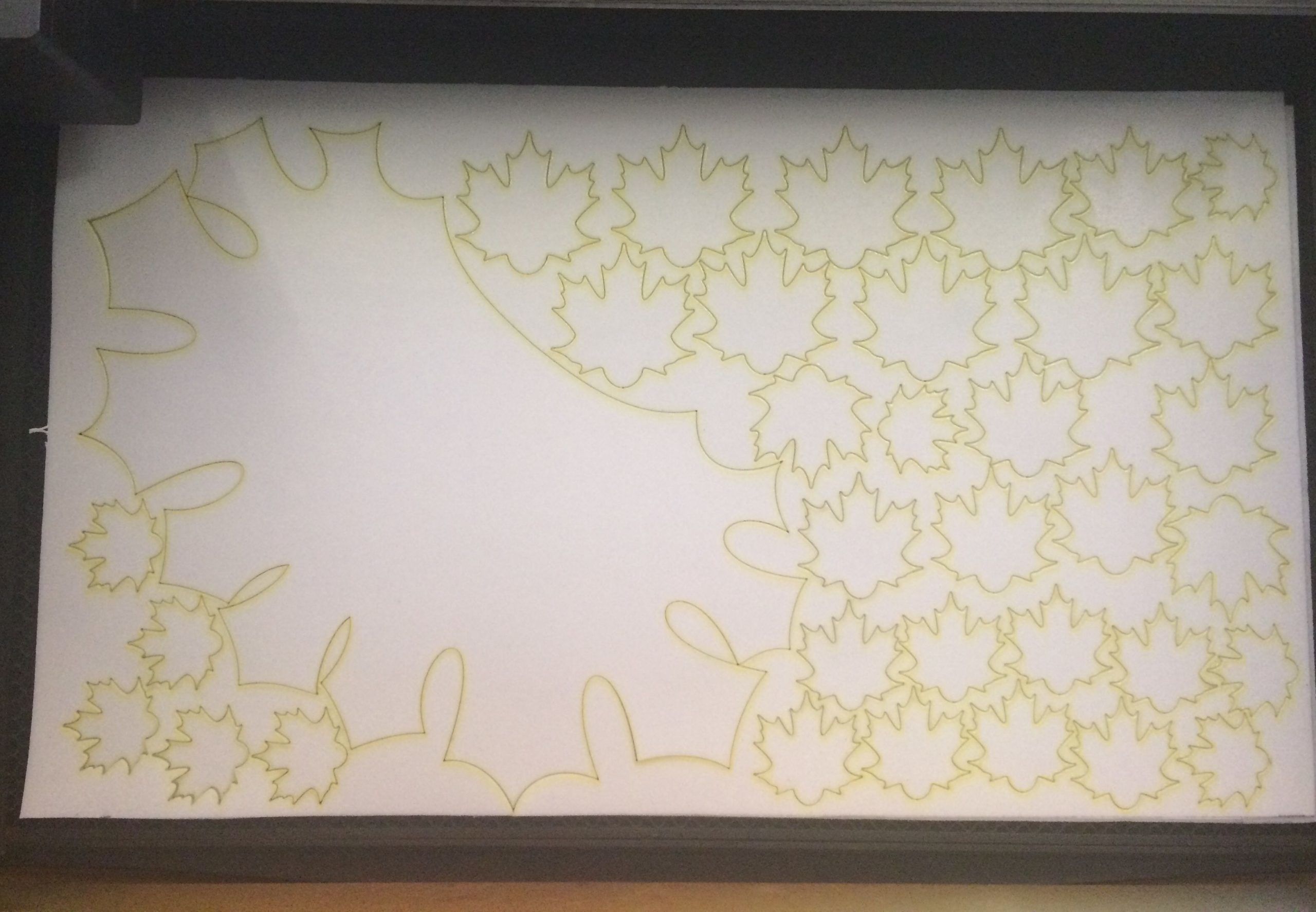
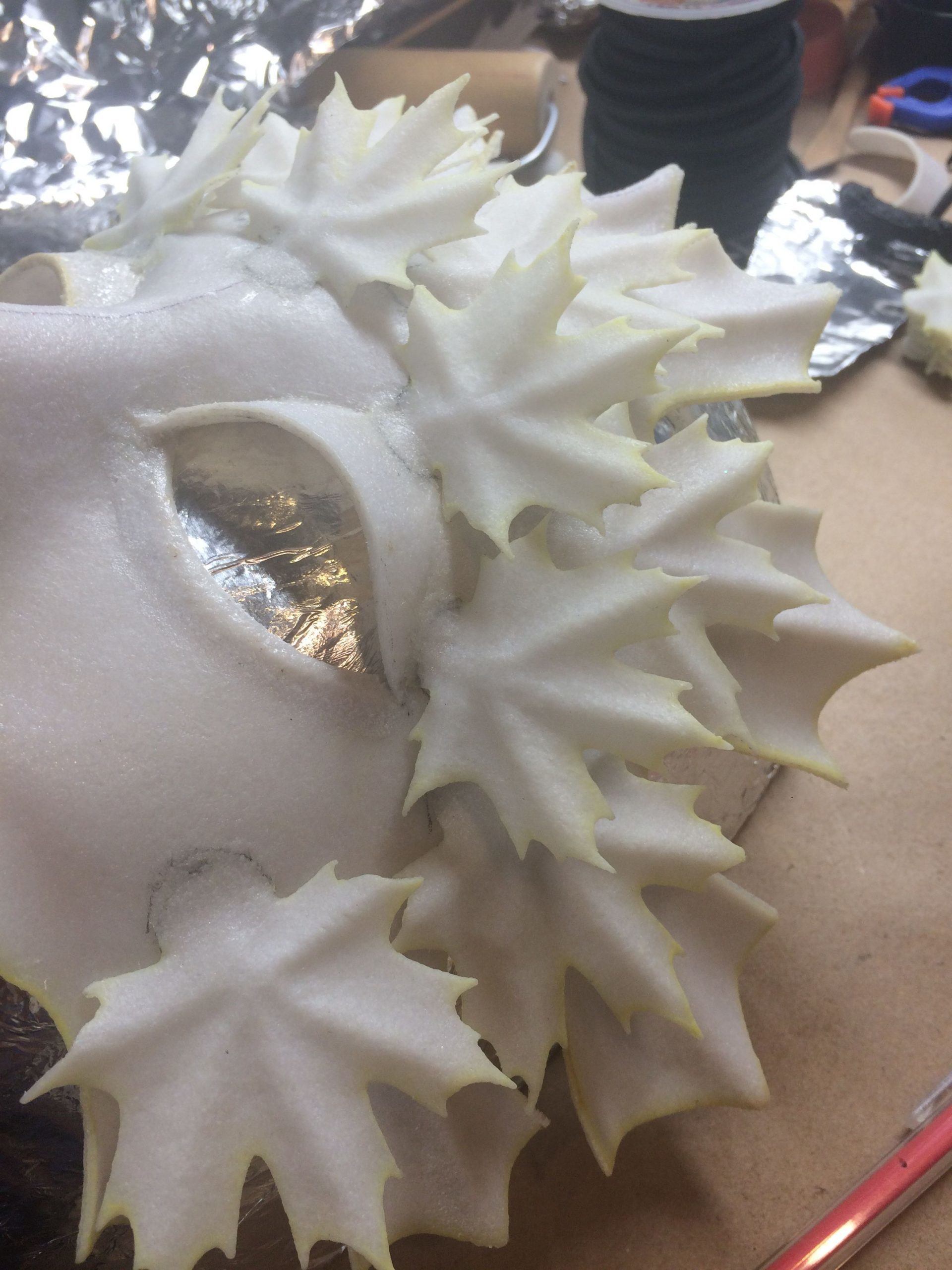
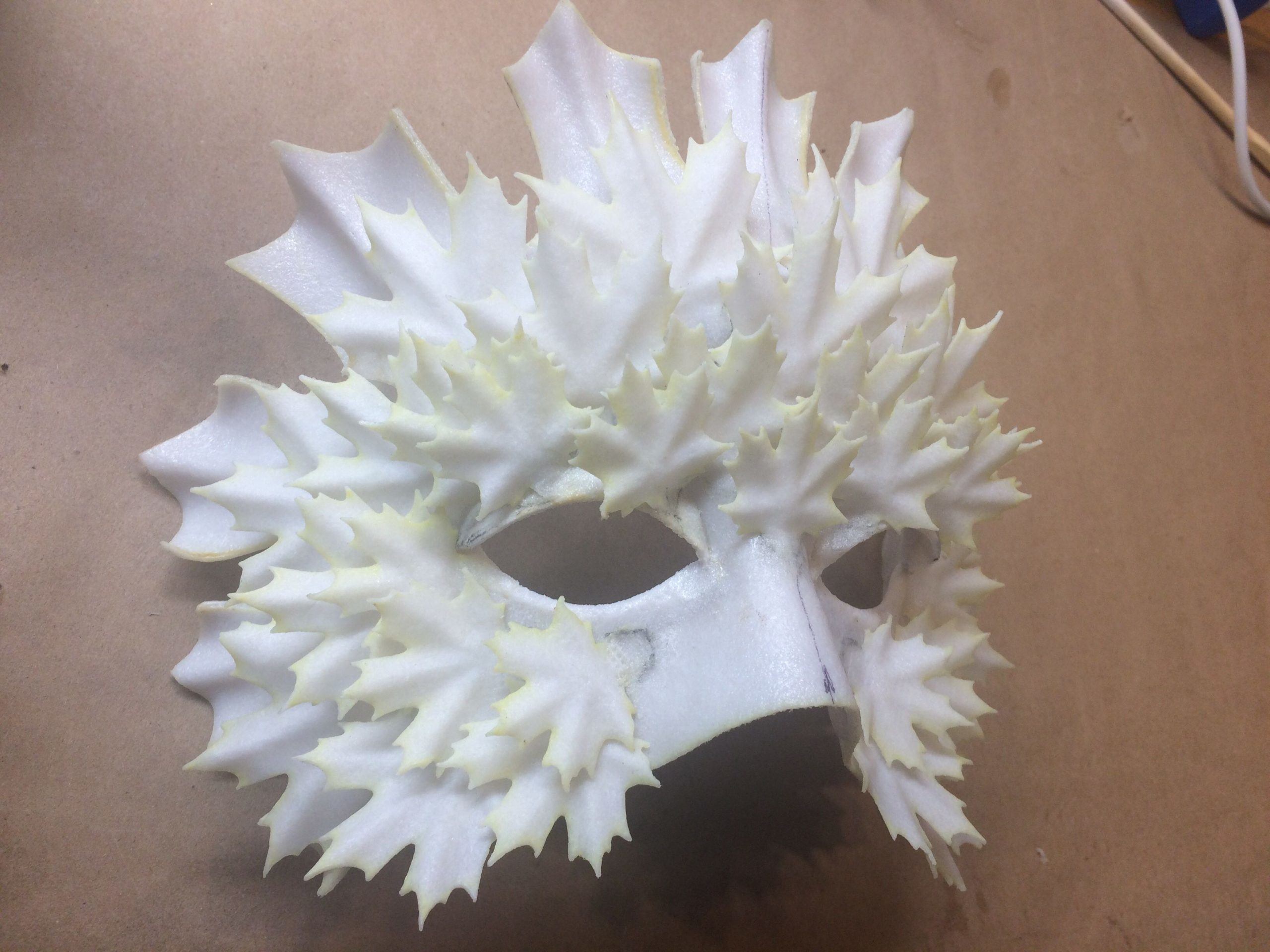
What wouldn’t/couldn’t you do without?
I would say the Foredom Wax Carver, although I obviously would not go very far without the heat gun in the first place… Laugh
Can you share an obstacle or challenge that you have had to overcome?
I have used Wonderflex for over 15 years, and the product’s specifications and characteristics have changed a number of times since. While I appreciate the smooth surface of the current version — saves a lot of time in surface prep and gessoing — the much thinner weight has forced me to fuse double or even triple layers together to attain the same structural strength and resilience as the original. It took a bit of adjusting. Also, I’d LOVE to find gloves that wouldn’t stick to hot Wonderflex while protecting my fingers from getting burned!
What’s the best piece of advice you’ve been given?
Anytime someone told me “You can’t do this!”, which had exactly the opposite effect. Yeah, I am a bit of a rebel…
How have you developed your career?n What exhibitions are you working on or have you participated in? Have you won any awards?
Speaking strictly about Wonderflex-made masks, they are represented by Human Arts Gallery in Ojai, California, where I live. They do a fantastic job of selling them for me. Every now and then we will advertise an art opening reception when I come up with a bunch of new masks and designs. I have also shown them in my own booth at various “Art-In-The-Park” art fairs and also as a vendor at Renaissance faires. My more recent work providing costumes and masks for events like the Adobe MAX conferences has brought me international exposure, and I am receiving commissions from private collectors and performers. With my ceramic and paper sculpting artwork, I have a long history of art fairs, gallery and museum showings, with a few best-in-show awards thrown in for good measure.
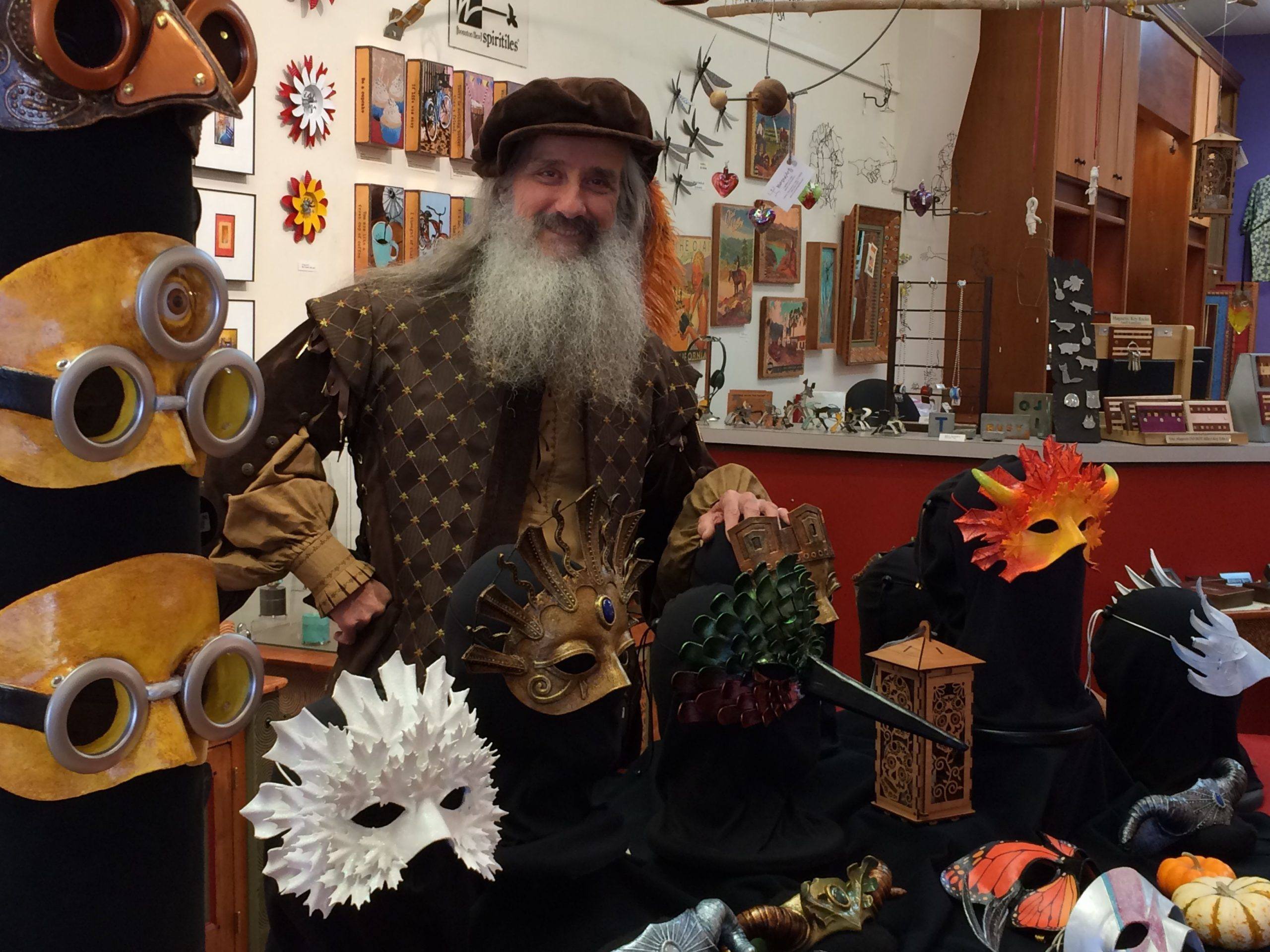
To see more of Robert Lamarche’s fabulous work or to commission a piece check out Robert’s facebook page at https://www.facebook.com/robert.lamarche , or his website at http://www.nimblearts.com